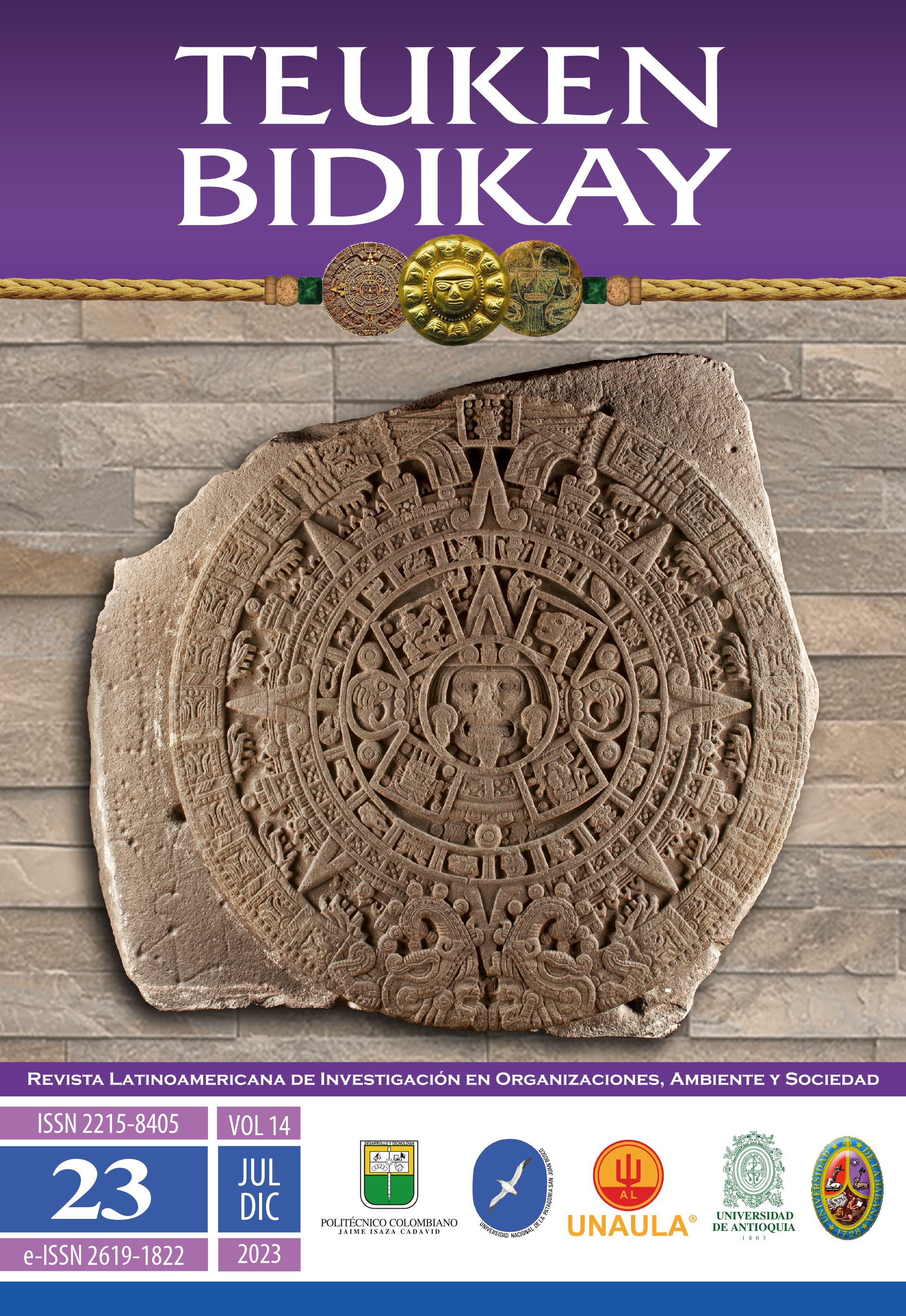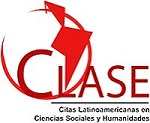Textile crafts as a cultural element of alternative tourism: The case of artisans of indigenous origin in Palenque, Chiapas.
DOI:
https://doi.org/10.33571/teuken.v14n23a7Keywords:
turismo alternativo, artesanía textil, artesanas, pueblos originariosAbstract
Mexico’s ethnic and cultural diversity attracts millions of tourists, representing an opportunity for stakeholders in the tourism sector. This research aimed to explore the challenges faced by women from indigenous peoples who create textile crafts as part of the cultural elements of alternative tourism. Using a case study method, this work investigated leaders’ experiences from textile artisan groups belonging to the Tzeltal and Ch’ol ethnic groups. The findings reveal that producing textile crafts offers a source of income for women from these two ethnicities. However, a gap in knowledge about the history and meaning of Ch’ol embroidery exists, primarily because most producers are of Tzeltal origin, which hampers the dissemination of the textile’s cultural attraction to visitors.
Article Metrics
Abstract: 506 PDF (Español (España)): 183PlumX metrics
References
Ávila, A. (2015). Análisis del turismo alternativo en comunidades indígenas de Chiapas, Méjico. Études caribéennes, 31-32, 1-22. https://doi.org/10.4000/etudescaribeennes.7601
Bayona, E. (2013). Textiles para turistas: tejedoras y comerciantes en los Altos de Chiapas. PASOS, Revista de Turismo y Patrimonio Cultural, 11(2), 371-386. https://doi.org/10.25145/j.pasos.2013.11.024
Cruz, S. (2014). Significado e importancia de las figuras y colores en la indumentaria tradicional Ch’ol. [Tesis de Licenciatura. Universidad Intercultural de Chiapas. Yajalon, Chiapas].
Gómez, D. y Rivas, M. (2018). Turismo rural comunitario en Méjico: la experiencia en Chiapas (Ponencia). Memorias CIISCOT Congreso Internacional sobre Innovación, Sostenibilidad y Competitividad Turística (pp. 37-47). AKD. https://www.academia.edu/39396136/Memorias_Congreso_Internacional_sobre_Innovaci%C3%B3n_Sostenibilidad_y_Competitividad_Tur%C3%ADstica_2018?auto=citations&from=cover_page
Hernández-Sampieri, R. & Mendoza, C. (2018). Metodología de la investigación, las rutas cuantitativa, cualitativa y mixta. Mc Graw Hill.
Instituto Nacional de Pueblos Indígenas. (2022). Regiones de los Planes Integrales de Desarrollo Regional de los pueblos y comunidades indígenas y afromexicanas por municipio. Gobierno de Méjico. https://www.gob.mx/cms/uploads/attachment/file/722382/Regiones-indigenas-inpi-enero-2022.pdf
Jiménez, V. y Comet, C. (2016). Los estudios de casos como enfoque metodológico. Academo, 3(2). https://revistacientifica.uamericana.edu.py/index.php/academo/article/view/54
Julca, E. (2016). Un enfoque a la importancia del turismo. Turismo y patrimonio (10), 133-136. https://doi.org/10.24265/turpatrim.2016.n10.09
Losada, N. & Mota, G. (2019). Slow down, your movie is too fast’: Slow tourism representations in the promotional videos of the Douro region (Northern Portugal). Journal of Destination Marketing & Management, 11, 140-149. https://doi.org/10.1016/j.jdmm.2018.12.007
Pasanchay, K. & Schott, C. (2021). Community-based tourism homestays’ capacity to advance the Sustainable Development Goals: A holisticsustainable livelihood perspective. Tourism Management Perspectives, 37, 1-11. https://doi.org/10.1016/j.tmp.2020.100784
Rivera, M., Alberti, P., Vázquez, V. y Mendoza, M. (2008). La artesanía como producción cultural susceptible de ser atractivo turístico en Santa Catarina del Monte, Texcoco. Convergencia (46), 225-247. https://convergencia.uaemex.mx/article/view/1347
Salazar, B., González, A. y Macias, A. (2020). El turismo cultural y sus construcciones sociales como contribución a la gestión sostenible de los destinos turísticos. Rosa Dos Ventos, 12(2), 406-428. https://doi.org/10.18226/21789061.v12i2p406
Shishmanova, M. (2015). Cultural tourism in cultural corridors, itineraries, areas and cores networked. Procedia - Social and Behavioral Sciences, 188, 246-254. https://doi.org/10.1016/j.sbspro.2015.03.382
Tinoco, G. y Ortega, A. (2015). Turismo alternativo en el sur de Guanajuato. Jóvenes en la ciencia, 1(1), 199-205. https://www.jovenesenlaciencia.ugto.mx/index.php/jovenesenlaciencia/article/view/618
Ursache, M. (2015). Tourism – significant driver shaping a destinations heritage. Procedia - Social and Behavioral Sciences, 188, 130-137. https://doi.org/10.1016/j.sbspro.2015.03.348
Velempini, K. & Martin, B. (2019). Place-based education as a framework for tourism education in secondary schools: A case study from the Okavango Delta in Southern Africa. Journal of Hospitality, Leisure, Sport & Tourism Education, 25, 1-10. https://doi.org/10.1016/j.jhlste.2019.100197
Yin, R. (2003). Case Study Research. Sage Publications
Downloads
Published
How to Cite
Issue
Section
License
Copyright (c) 2024 Dulce Pérez, Pedro Ramón-Hernández

This work is licensed under a Creative Commons Attribution-NonCommercial-ShareAlike 4.0 International License.


























